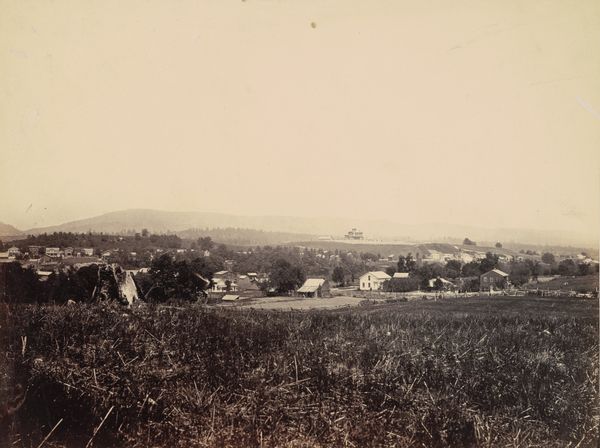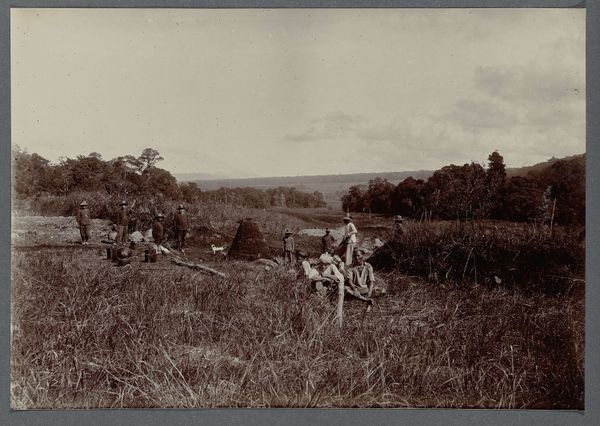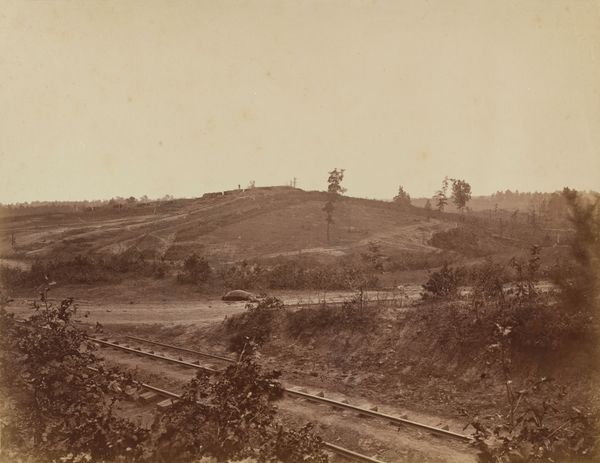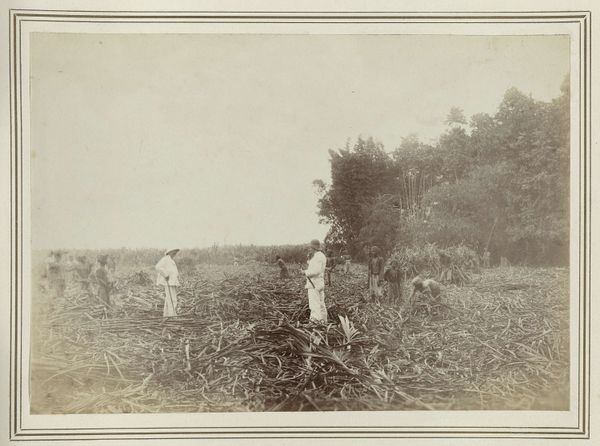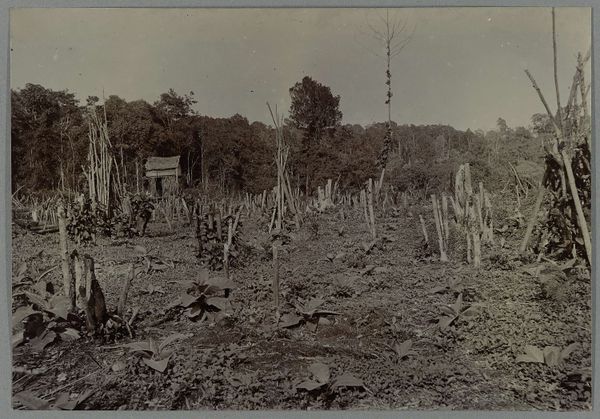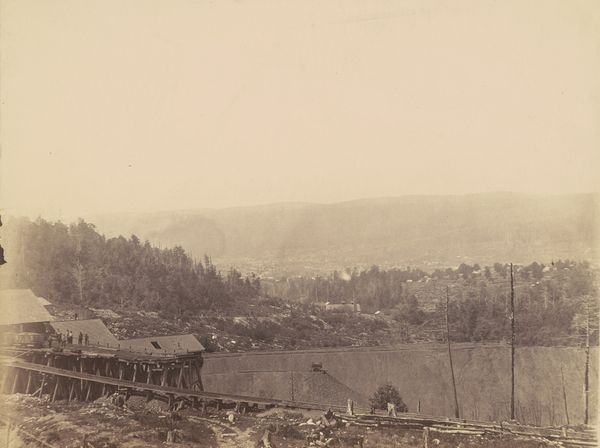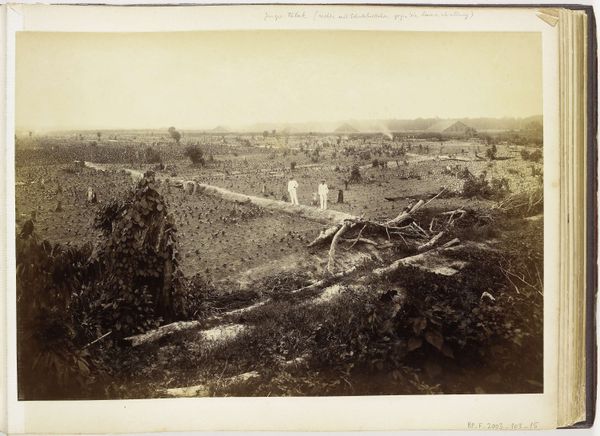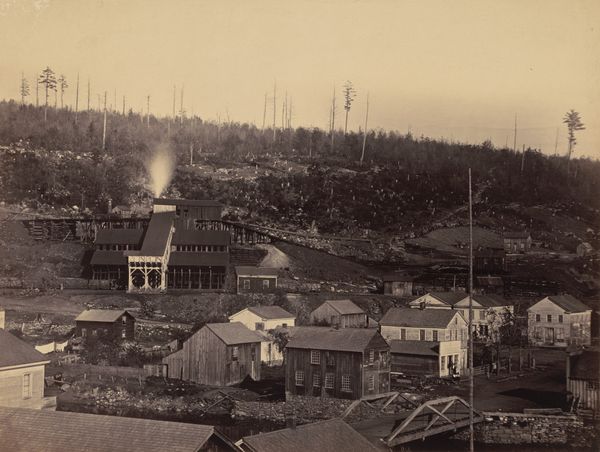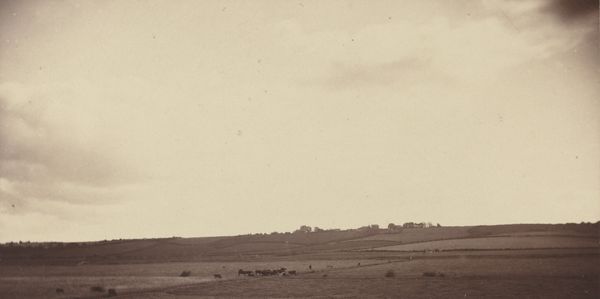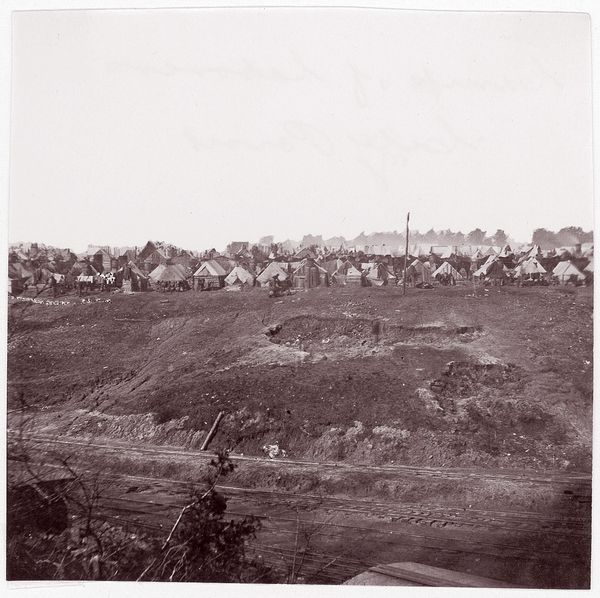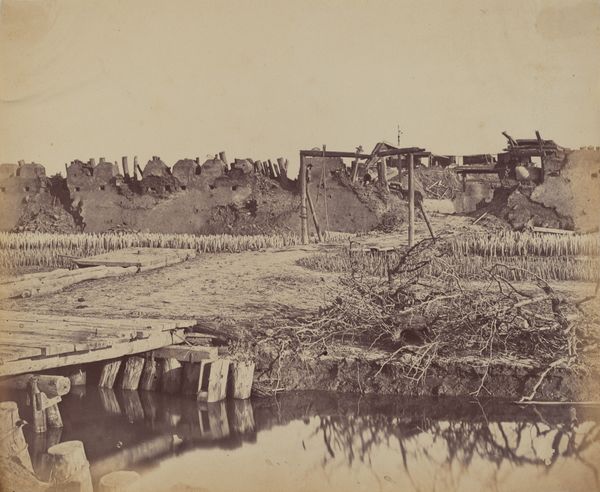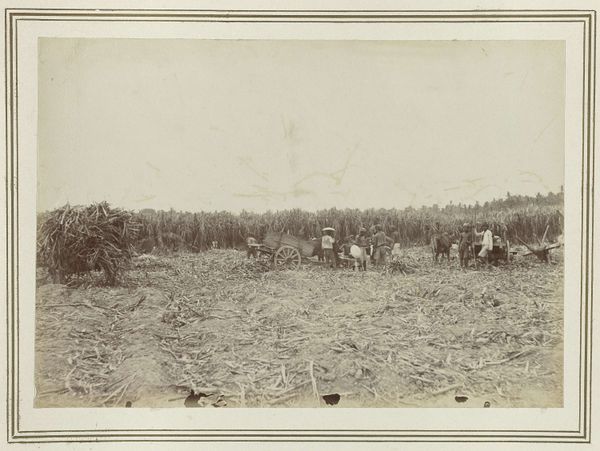
Dimensions: image: 30.48 x 41.12 cm (12 x 16 3/16 in.) mount: 45.56 x 55.72 cm (17 15/16 x 21 15/16 in.)
Copyright: National Gallery of Art: CC0 1.0
Curator: This is "Waymart," a gelatin silver print, believed to have been created by Thomas H. Johnson between 1863 and 1865. Editor: Whoa, this feels like a stage set from some long-lost, melancholic play. That stark landscape with the distant town peeking through... it's beautifully desolate. Curator: Johnson's "Waymart" arrives to us from an era marked by upheaval, and its visual language invites interrogation. We see, primarily, what appears to be recently deforested land—a deliberate reshaping of nature that necessitates a socio-political unpacking. What do you make of that element? Editor: It feels so raw. The chopped trees almost look like tombstones. Someone really went to town here. And look at those figures… dwarfed by it all! Do you think they are like Adam and Eve thrown out from paradise or something? Curator: That's a thought-provoking interpretation. The figures are indeed fascinating in their seeming ambivalence about the devastated land. From a contextual lens, that kind of clear cutting had immense economic and environmental consequences, often driven by extractive industries. Consider the repercussions on indigenous populations, for example. Editor: Wow. When you look at it that way, it’s not pretty. You know, at first I was mesmerized by the fog in the back that makes the little town a mysterious fairyland. Now that looks sinister, like progress and the price that nature pays...I hate how clear it suddenly became. Curator: It invites contemplation on what “progress” signifies. What is gained, and what is irrevocably lost. Johnson was definitely on to something, even though this wasn't his explicit aim to engage social discourse. Editor: It's weird, because it’s such a still image, like someone froze a sad song and turned it into a place. Maybe it makes us reflect that we should do more, but how and about what? Curator: A fundamental question and ultimately where critical theory meets personal responsibility. Johnson gives us an elegy but we also read it as a challenge. Editor: Okay, you convinced me! It has some kind of force—that pushes you towards reality like someone pulling the rug from under your feet. I guess, it's beautiful and cruel, kind of like life!
Comments
No comments
Be the first to comment and join the conversation on the ultimate creative platform.
